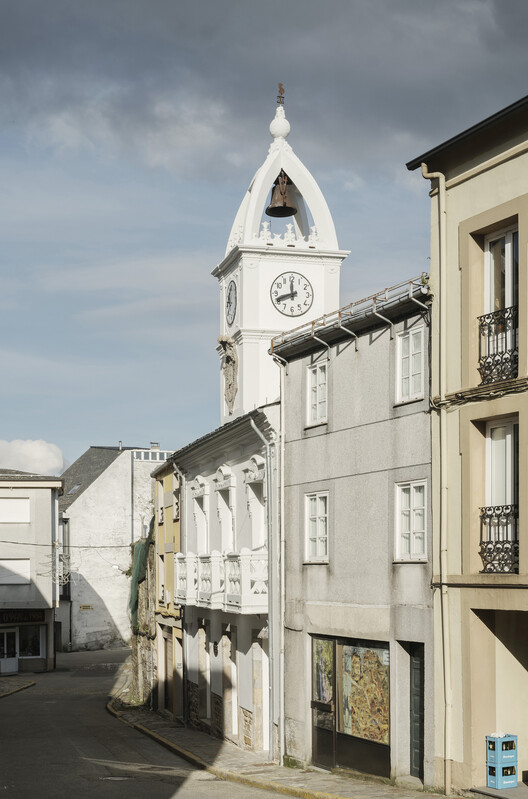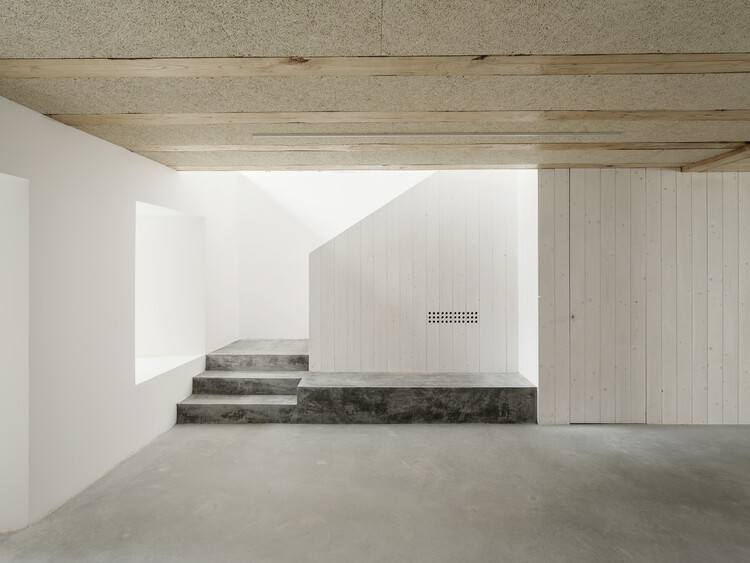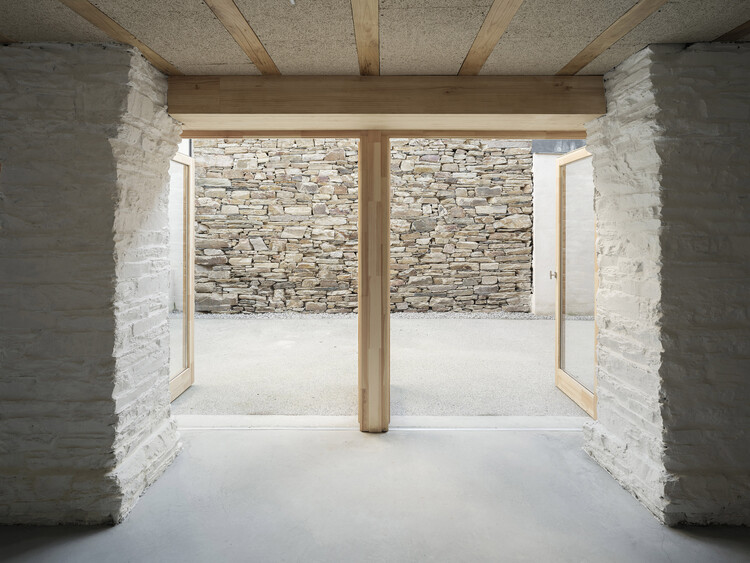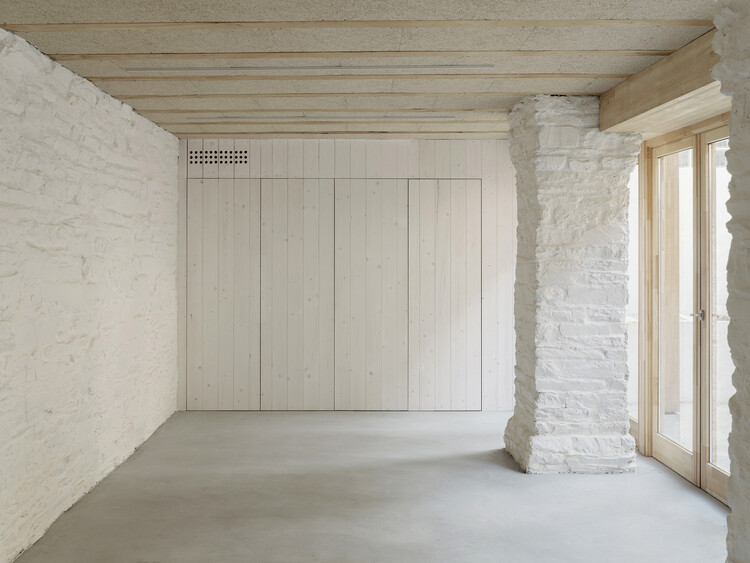
-
Architects: FIRM architects
- Area: 350 m²
- Year: 2024
-
Photographs:Luis Díaz Díaz
-
Manufacturers: Siero Lam, Baxi, DANOSA, Madefon
-
Lead Architects: Daniel Gómez Magide, Adrián López Rancaño

Text description provided by the architects. The Old Town Hall of A Fonsagrada (1845), unused since 2015, is transformed with this project into a space where the City Council can showcase the collection donated by the cartoonist Antonio Fraguas “Forges” after his passing in 2018. The proposal for the Forges Cultural Center delves into some of the basic concepts of intervention in built heritage. The reading and analysis of the different stages, uses, and interventions that occurred in the building allow us to identify which ones added value and which ones went against the original logic of the construction. In this sense, the first task was to clean and select, as well as to consolidate the deteriorated structural elements. On the other hand, one of the major challenges of introducing a museum use in a building of this type was adapting the pre-existing structure to current regulations, especially regarding accessibility, fire protection, temperature and humidity control, and energy efficiency. Thus, the original courtyard of the building, which had been covered with a methacrylate vault in the 1990s, was recovered, delineated by a new façade made of laminated chestnut wood structural elements, which also functions as a solar control and capture device. Inside, the spaces created by the existing masonry walls are utilized to develop the program of needs in the simplest way possible, adding only a circulation core and a service core.


The ground floor is understood as a space for interaction with the street, located in the Historic Center of the town and next to the Camino Primitivo de Santiago. In this way, it houses the future tourist office, the lobby of the Cultural Center, and a multipurpose room that can extend to the recovered courtyard. Meanwhile, the first floor is distributed into three. Regarding the use of materials and resources in the intervention, the premise was to use local materials and labor, making it viable both economically and environmentally. The rehabilitation of existing heritage is understood as one of the most basic concepts of sustainability. The abandonment of infrastructure and urban fabric is unproductive and unnecessary, generating more expense.


In this same line, and considering the presence of a small industry in the locality dedicated to chestnut sawing, the use of this species of wood was chosen in all available formats: sawn and laminated structural wood, as well as finishes for both flooring and vertical surfaces. On one hand, the commitment to this type of industry allows for maintaining a forestry option away from pine and eucalyptus monocultures, while also being a way to locally regulate the relationships between economy and ecology, contributing to the decarbonization of the construction sector.































